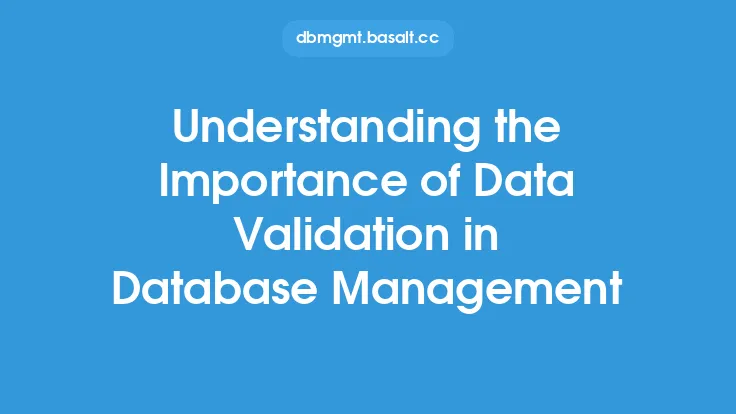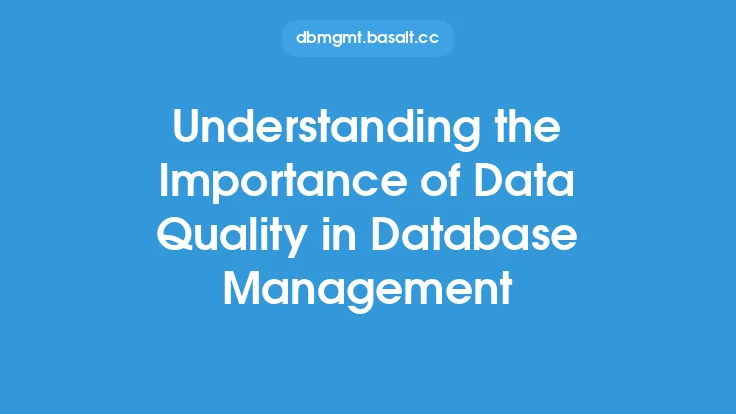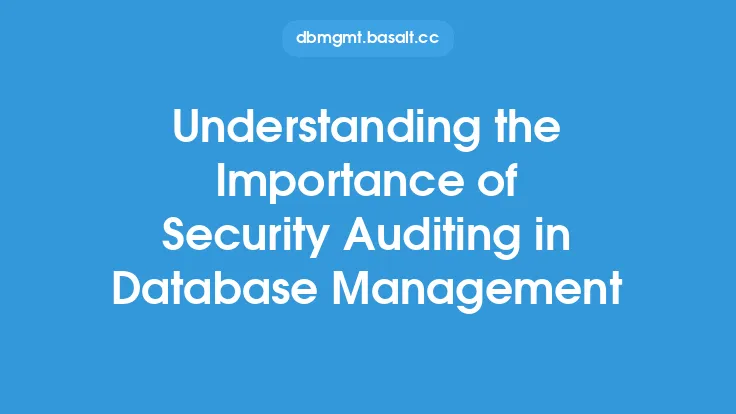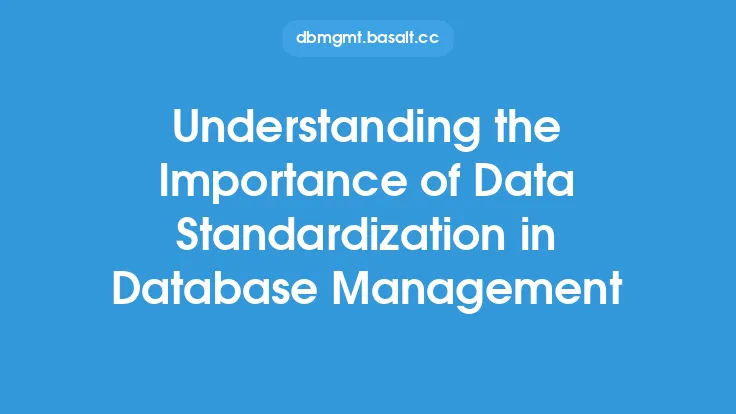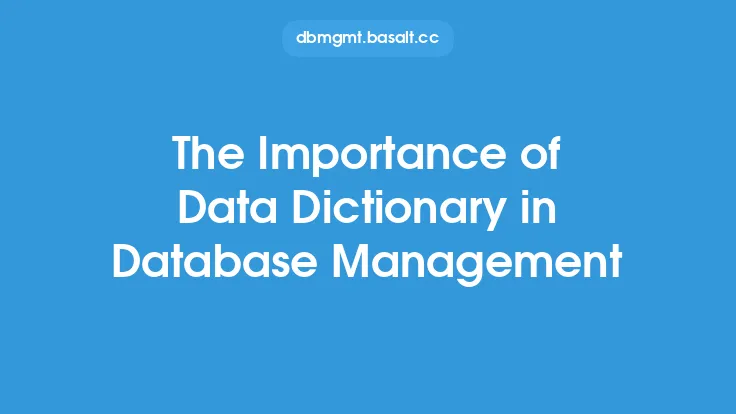Data cleansing is a crucial aspect of database management that involves identifying, correcting, and transforming inaccurate, incomplete, or inconsistent data into a more reliable and consistent format. This process is essential for maintaining the integrity and quality of data, which is critical for making informed decisions, improving business operations, and reducing the risk of errors. In this article, we will delve into the importance of data cleansing in database management, its benefits, and the techniques used to achieve it.
Introduction to Data Cleansing
Data cleansing, also known as data scrubbing or data cleaning, is a process that involves reviewing and revising data to ensure its accuracy, completeness, and consistency. This process is typically performed on data that has been collected from various sources, such as customer feedback, sales transactions, or social media platforms. The goal of data cleansing is to transform raw data into a more usable and reliable format, which can be used for analysis, reporting, and decision-making.
Benefits of Data Cleansing
Data cleansing offers numerous benefits, including improved data quality, increased accuracy, and enhanced decision-making. Some of the key benefits of data cleansing include:
- Improved data quality: Data cleansing helps to identify and correct errors, inconsistencies, and inaccuracies in data, resulting in higher quality data.
- Increased accuracy: Clean data reduces the risk of errors and inaccuracies, which can lead to incorrect decisions and outcomes.
- Enhanced decision-making: Clean and reliable data enables organizations to make informed decisions, which can lead to improved business outcomes and increased competitiveness.
- Reduced costs: Data cleansing can help reduce costs associated with data storage, processing, and analysis by eliminating unnecessary or redundant data.
- Improved customer satisfaction: Clean and accurate data can help organizations to better understand their customers' needs and preferences, leading to improved customer satisfaction and loyalty.
Data Cleansing Techniques
There are several data cleansing techniques that can be used to improve the quality and accuracy of data. Some of the most common techniques include:
- Data profiling: This involves analyzing data to identify patterns, trends, and anomalies.
- Data validation: This involves checking data against a set of rules or constraints to ensure its accuracy and consistency.
- Data transformation: This involves converting data from one format to another to improve its usability and consistency.
- Data standardization: This involves standardizing data formats and structures to improve its consistency and comparability.
- Data matching: This involves identifying and merging duplicate records to improve data accuracy and reduce redundancy.
Data Cleansing Tools and Software
There are several data cleansing tools and software available that can help organizations to improve the quality and accuracy of their data. Some of the most common tools include:
- Data quality software: This software is designed to identify and correct errors, inconsistencies, and inaccuracies in data.
- Data integration software: This software is designed to integrate data from multiple sources and formats, improving its consistency and usability.
- Data transformation software: This software is designed to convert data from one format to another, improving its usability and consistency.
- Data analytics software: This software is designed to analyze and visualize data, helping organizations to identify trends, patterns, and insights.
Challenges and Limitations of Data Cleansing
While data cleansing is an essential aspect of database management, it can be a challenging and time-consuming process. Some of the common challenges and limitations of data cleansing include:
- Data complexity: Large and complex datasets can be difficult to cleanse and manage.
- Data volume: Large volumes of data can be overwhelming and require significant resources to cleanse and manage.
- Data variety: Data from multiple sources and formats can be difficult to integrate and cleanse.
- Data quality: Poor data quality can make it difficult to cleanse and manage data effectively.
- Resource constraints: Data cleansing can require significant resources, including time, money, and personnel.
Best Practices for Data Cleansing
To ensure effective data cleansing, organizations should follow best practices, including:
- Develop a data cleansing strategy: This involves identifying the goals and objectives of data cleansing and developing a plan to achieve them.
- Use data quality metrics: This involves using metrics to measure data quality and track progress over time.
- Use data cleansing tools and software: This involves using specialized tools and software to automate and streamline the data cleansing process.
- Involve stakeholders: This involves involving stakeholders in the data cleansing process to ensure that their needs and requirements are met.
- Continuously monitor and evaluate: This involves continuously monitoring and evaluating data quality to ensure that it meets the required standards.
Conclusion
Data cleansing is a critical aspect of database management that involves identifying, correcting, and transforming inaccurate, incomplete, or inconsistent data into a more reliable and consistent format. By understanding the importance of data cleansing and using the right techniques, tools, and software, organizations can improve the quality and accuracy of their data, leading to better decision-making, improved business outcomes, and increased competitiveness. While data cleansing can be a challenging and time-consuming process, following best practices and using the right resources can help organizations to overcome these challenges and achieve their goals.
